
CLIMATE NEUTRALITY 2030
The Guggenheim Museum Bilbao has been at the forefront of environmental responsibility for the past twenty years. In 2004, it was certified for ISO 14001. Since then, sustainability has been a key concern in the Museum’s Strategic Plan. In 2021, the Museum set out an Environmental Sustainability Strategic Framework in line with the Sustainable Development Goals adopted in the United Nations General Assembly resolution known as the 2030 Agenda. This laid the foundation for the development of the first Sustainability Action Plan in 2022.

Sustainability is a cross-cutting theme for the Museum’s activity in 2023. Accordingly, the Museum has designed an ambitious Sustainability Action Plan that reaches each and every department, from those specifically concerned with energy efficiency, exhibition management, and the design of public program and educational activities, to those connected with visitors, retail operations, and the restaurant. The Plan promotes initiatives to improve energy efficiency and minimize environmental impact, with the aim of achieving climate neutrality by 2030.
The driving force behind these changes is Gu-Zero, a group whose members come from different Museum areas, established in 2021 with the aim of sharing information, raising awareness, and engaging workers, suppliers, and social actors while identifying and implementing the initiatives included in the Sustainability Action Plan.
News from a Sustainable Museum
- The Guggenheim Museum Bilbao installs on its rooftops 300 solar panels, perfectly integrated into the architecture. Project financed by nextgenerationEU European funds. In addition, the Museum has presented the 2024-2025 environmental sustainability plan, which includes the commitment to work towards carbon neutrality by 2030.
- Gallery Climate Coalition (GCC) Active Membership Renewal. The Guggenheim Museum Bilbao has got its Active Membership renewed at Gallery Climate Coalition (GCC), an initiative giving recognition to GCC members who can demonstrate that they have taken action to reduce their environmental impact. We were the first museum in Spain to join the Coalition in 2023, alongside some of the world’s leading art museums and galleries, such as New York’s MoMA and London’s Tate.
- European Week for Waste Reduction. From November 18 to 26, the Guggenheim Museum Bilbao is taking part in the European Week for Waste Reduction (EWWR) by carrying out two innovative actions aimed at encouraging reduction, reuse, and recycling.
Reducing and reusing museographic elements. In an effort to encourage waste reduction and the reuse of materials in an environment where recycling is quite unusual, the Guggenheim Museum Bilbao shared with the Picasso Museum Málaga the 29 climate-controlled display cases used in the exhibition Picasso Sculptor. Matter and Body. These display cases were designed and manufactured by the Picasso Museum Málaga, where the exhibition was first held, and given their high costs and complex manufacture, it was agreed that they should be reused. As part of the museums’ agreement, upon the end of the show in Bilbao said display cases will go back to Málaga for further use in future exhibitions.
Street marketing action sponsored by Iberdrola. The iconic polka-dots which were scattered over the Museum ponds during the exhibition Yayoi Kusama: 1945 to Now to identify the artist’s work were made with sustainable materials. After the exhibition, they were used to make the backs of household appliances, thus making a contribution to a circular economy. - WAF International Symposium. On October 3, the world-famous artist Olafur Eliasson closed the WAF Symposium after a day of intense and fruitful sessions dedicated to presenting the most innovative sustainability strategies worldwide. The Symposium, organized by World Art Foundations (WAF) in collaboration with the Guggenheim Museum Bilbao brought together leaders from museums and foundations from all over the world to share the most innovative environmental sustainability strategies.
- Active Membership of the Gallery Climate Coalition (GCC). Since May 10, the Guggenheim Museum Bilbao is an Active Member of GCC, an international community of arts organizations working to reduce the museum sector’s environmental impacts. GGC’s primary goal is to facilitate a reduction of CO2 emissions by a minimum of 50% by 2030, as well as promoting zero waste. With this membership, the Guggenheim Museum Bilbao becomes the first Spanish museum to form part of a coalition in which international museums, such as MoMA or Tate, participate.
- Presentation of new uniforms. On March 22, the Museum introduced the new staff uniforms, made by Ecoalf with recycled materials. The new uniforms are worn by staff members at the Admissions and Information desks, the Store, and security. The choice considered design, comfort, versatility, and sustainability as well, in an effort to continue minimizing the environmental impact of the Museum’s activity at all levels. In this sense, the selection of Ecoalf was due to its committed to sustainability, recycling, and innovation in the making of clothes.
- Museum Next. In August 2022, Daniel Vega, the Museum’s Deputy Director of Exhibitions and Conservation, attended the Green Museums Summit, sharing the Museum’s strategies and initiatives for the staging of temporary exhibitions.
- International Climate Control Conference. In December 2022, the Museum introduced its more flexible climate control standards when taking care of works of art in this international forum.
- LED Lighting. Between 2015 and 2021, the Museum replaced all its lamps by LED lights, reducing the emissions of CO 2 by 350 metric tons a year—a considerable decrease in its carbon footprint.
- Renovation of Jeff Koons’s Puppy, de Jeff Koons. In November 2021, the renovation of Puppy, the flower sculpture by Jeff Koons, was finished. The project included an automatic irrigation system and a digital rain gauge to optimize the use of water. This has resulted in a more responsible use of this valuable resource and in lower maintenance costs.
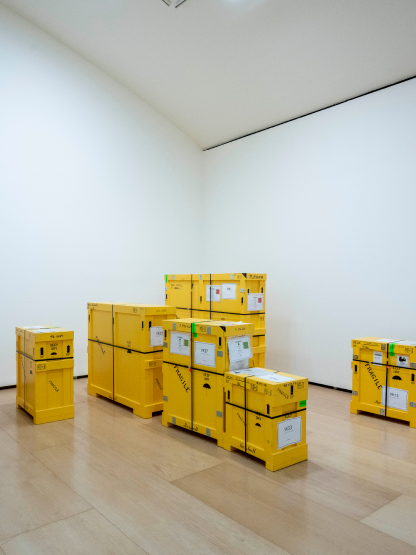
MEASURING THE CARBON FOOTPRINT
The Guggenheim Museum Bilbao is one of the first museums globally to measure its carbon footprint including indirect emissions. Since 2019, the Museum has calculated the CO 2 emissions generated by the transport of works of art and associated staff mobility. Moreover, since 2021, the emissions produced by artwork packing and exhibition production were included. Based on these data, the Museum was able to know its impact on the environment and set the goals of its Sustainability Action Plan accordingly.
Guggenheim Museum Bilbao Greenhouse Gas (GHG) 2023 Inventory Report
Guggenheim Museum Bilbao Greenhouse Gas (GHG) 2022 Inventory Report
Guggenheim Museum Bilbao Greenhouse Gas (GHG) 2021 Inventory Report
ENERGY EFFICIENCY AND ENVIRONMENTAL POLCY
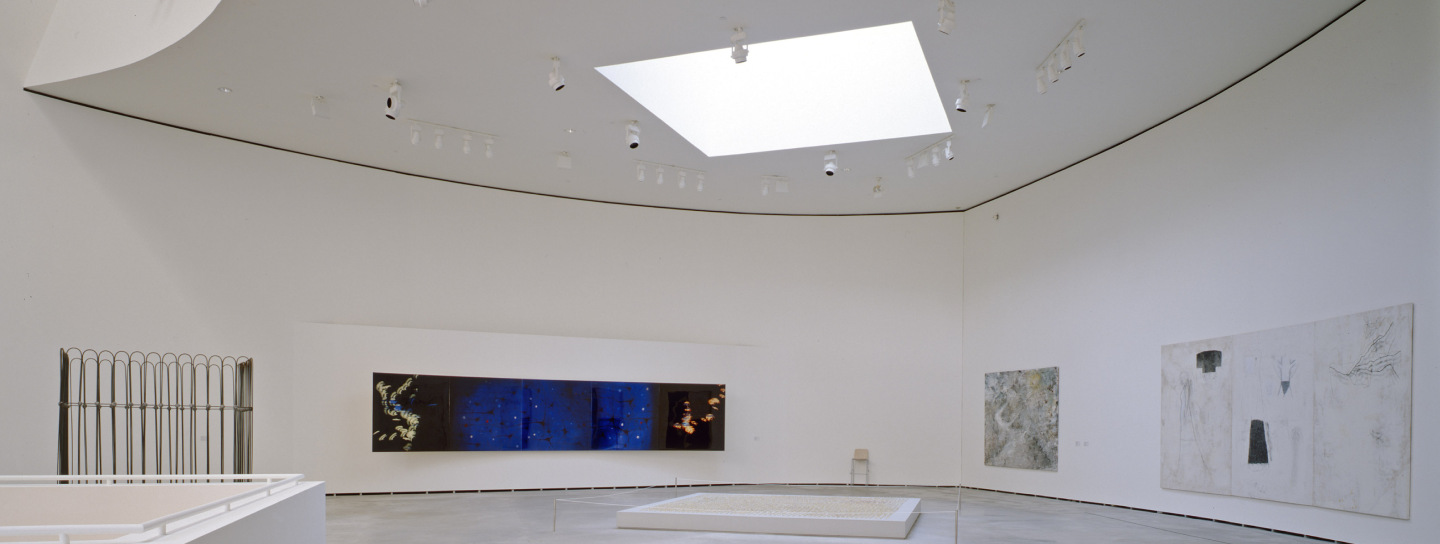
The 2023 Sustainability Action Plan includes a series of energy efficiency measures based on facility optimization and technology upgradation. Meanwhile, the Museum is actively working on consumption reduction and the recycling of materials, and carrying out circular economy projects.
- More flexible temperature and humidity controls:. The Museum is a global leader in this trend in art conservation. Following the recommendations of ICOM, IIC, and the Bizot Group, since October 2022, the Museum has applied controls adapted to the exterior weather conditions. This results in lower energy consumption for air conditioning. Our current parameters are 20 o C ± 3 o temperature, 40%–60% relative humidity, and 5% maximum diurnal range

- Installation of photovoltaic panels.
- Dynamic lighting: In 2022, the Museum set out to reopen the building’s skylights and go back to the original gallery layout, combining natural light and LED lighting automatically.
- Installation of electric vehicle charging stations in the vicinity of the Museum.
- Reduction of new packing materials for art transportation, replaced by rental options.
- Virtual monitoring of the works of art traveling from one institution to another. The use of technology contributes to reducing mobility.
- Reuse of temporary walls in exhibitions staged in the same galleries.
- Sharing of museum staging elements with local institutions.
- Sale of a higher number of sustainable goods in the Museum Store.
- Air purification in outdoor advertising campaigns: In 2021, the Museum implemented a special treatment applied to its advertising campaigns across the city. The treatment is currently being used in all outdoor advertising supports: pole banners, wallscapes, and billboards.
- Use of locally-sourced and in-season ingredients in its gastronomic spaces.
EXHIBITIONS AND EDUCATION
The Guggenheim Museum Bilbao annual art program offers the chance to reflect on the environment and raise awareness of the need to take environmental action. Two of the exhibitions being staged in 2023 have a clear environmental sustainability angle:
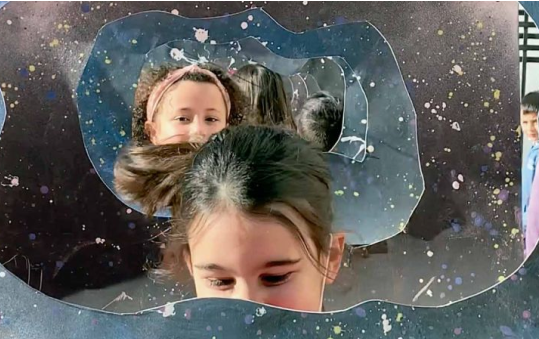
Environmental care has inspired several of the projects carried out by the students who are part of the exhibition that brings the educational program Learning through Art to a close every year. The program is celebrating its 25th anniversary this year.
With regard to education, the Museum’s workshops, tours, and activities can contribute to sustainable development and improve the quality of life for people. This year, they include biomimetic guided tours in the vicinity of the Museum, creative sessions dealing with the colors of the Earth, workshops focusing on Jeff Koons’s Puppy and Yoko Ono’s Wish Tree for Bilbao, and a number of lectures and seminars. In addition to green routes to get to know some of the works in the Collection independently and reflect at the same time on environmental sustainability.
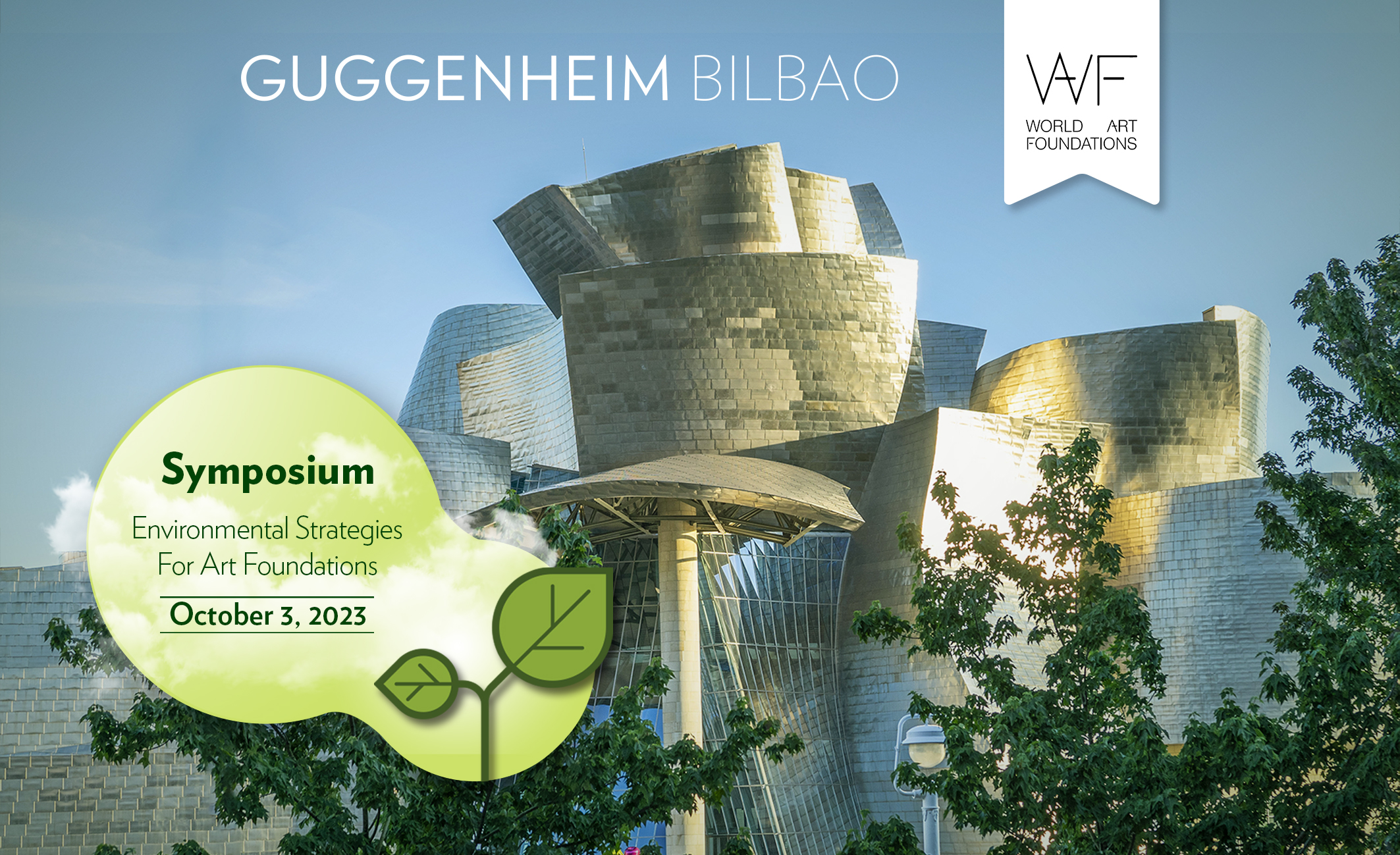
On October 3, the world-famous artist Olafur Eliasson closed the WAF Symposium after a day of intense and fruitful sessions dedicated to presenting the most innovative sustainability strategies worldwide. The Symposium, organized by World Art Foundations (WAF) in collaboration with the Guggenheim Museum Bilbao brought together leaders from museums and foundations from all over the world to share the most innovative environmental sustainability strategies.
On June 14 and 15, as part of the EHU/UPV Summer Courses, the Guggenheim Bilbao Museum organized an international symposium focused on environmental sustainability.
Three exhibitions and two of the public programs organized by the Museum in 2022 made reference to climate change and environmental sustainability.
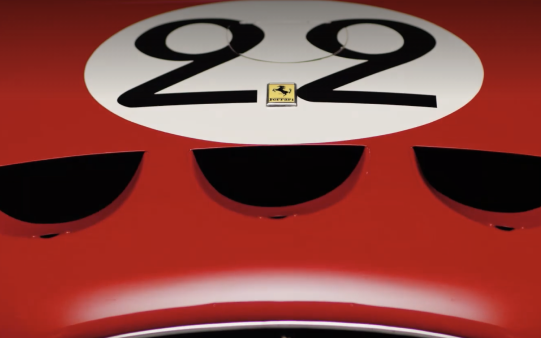
This exhibition’s final section, “Future,” included future mobility projects by fifteen internationally renowned design schools, with an eye on sustainable innovation and energy transition. This innovative Gallery of the Future is currently being shown in the Autostadt in Wolfsburg, Germany.

This video and sculpture installation by Monira Al Qadiri is a reflection on colonial history, the oil culture, and the formation of identities in the Middle East.

This video installation focused on Visva Bharati, the school founded by Nobel Prize laureate Rabindranath Tagore in Santiniketan (West Bengal, India) in 1919, and its teachings, including the conservation of nature.

In September, the representatives of some of the most renowned design schools in the world discussed the global economy and the future of human societies.



